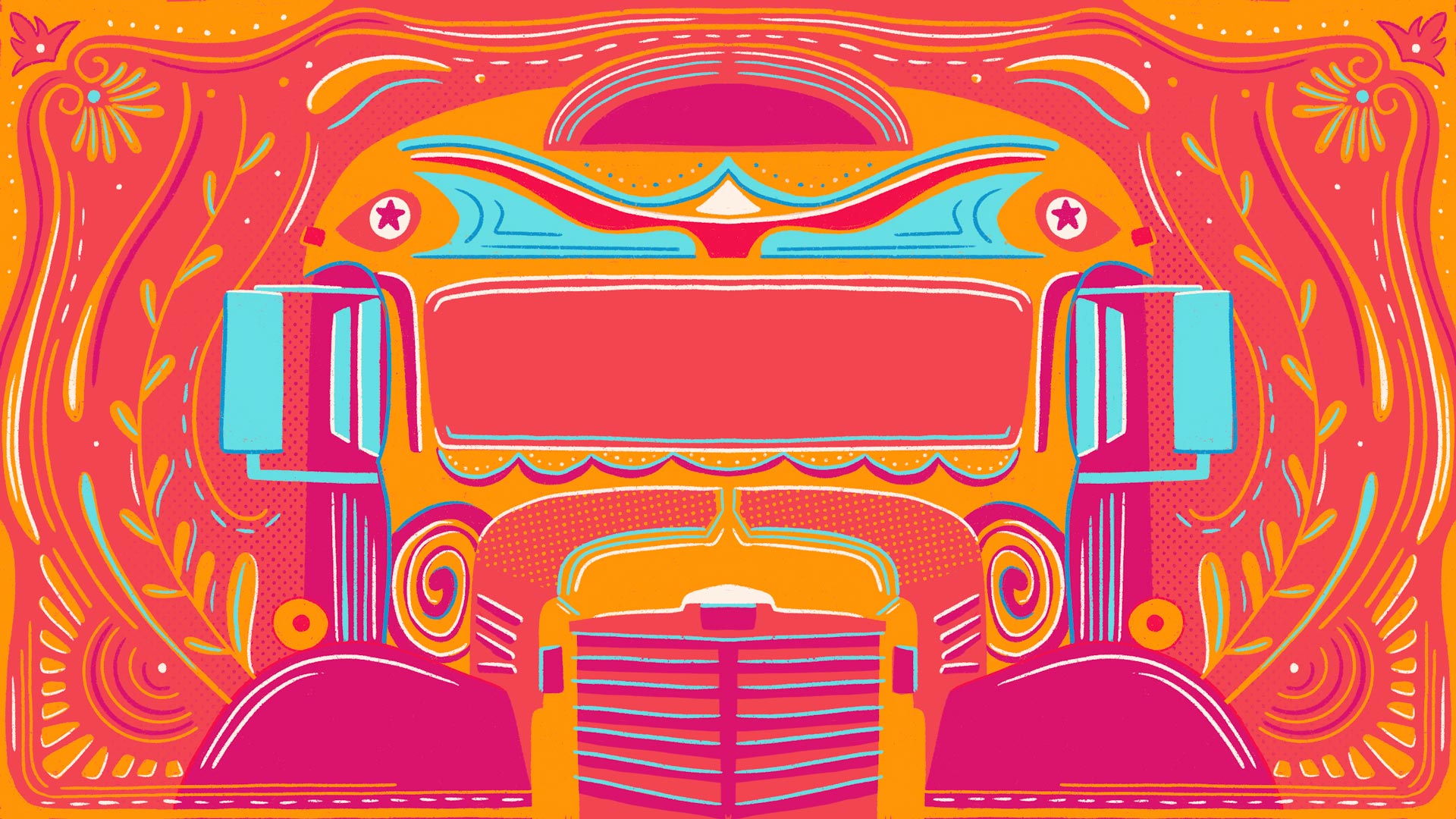
The counterculture: we see it in the brushstrokes of John Everett Millais and James Ensor, read it in the words of Jack Kerouac and Ken Kesey, and hear it in the roar of the MC5 and the melodies of John Phillips. As a matter of fact, counterculture is the expression of a group’s set of values and behaviors that challenge accepted social norms in a given culture. It is the pursuit of a breach with the establishment.
A change agent that averts the stagnation of norms that are no longer appropriate. As such, as scholars Joanne Martin and Caren Siehl argue, countercultures act as catalysts of cultural evolution: “a counterculture can serve some useful functions for the dominant culture, such as articulating the foundations between appropriate and inappropriate behavior and providing a safe haven for the development of innovative ideas.” And although the term “counterculture” was first minted by American sociologist John Milton Yinger to describe the anti-establishment cultural phenomenon that was unfolding in much of the Western world in the mid-‘60s, countercultures have earlier origins. Just think of nineteenth-century Europe, where Decadentism flourished, and the Bohemians sprang up. Or, delving into the twentieth century, the postwar Beat Generation.
The ‘50s, especially in America, gave birth to a part of what we now know as the modern world. What is called the Third Industrial Revolution took hold in those years — with the transition from analog mechanical and electronic technology to digital electronics. Simultaneously, however, the social context of the time was dominated by conformity. During World War II, men and women were forced into new occupational and behavioral patterns, but “traditional roles” were reaffirmed once the fighting was over. Men were expected to be breadwinners and work. Women were expected to be wives and mothers — and perfect ones.
The mass media reinforced this, contributing to the trend toward homogenization, and delivering a common portrayal of more or less accepted social role models. In 1963, in her bestseller The Feminine Mystique, Betty Freidan, a feminist, activist, and writer, described the situation of American women in the ‘50s:
“Over and over again, stories in women’s magazines insist that women can know fulfillment only at the moment of giving birth to a child. They deny the years when she can no longer look forward to giving birth, even if she repeats the act over and over again. In the feminine mystique, there is no other way for a woman to dream of creation or of the future. There is no other way she can even dream about herself, except as her children’s mother, her husband’s wife.”
But not all Americans felt they had to comply with certain rules both dictated and imposed from above. This is how, in the artificial security of the ‘50s, the Beats arose: a group of young nonconformist writers, eager to reject common mass narrative values as opposed to free personal expression — which they sought also by experimenting with drugs, spirituality, and sexual freedom. A movement that upheld intuition over reason, contrasted Western religion with Eastern mysticism and rejected economic materialism. On the Road, the famous novel by Jack Kerouac, a pioneer of the Beat Generation, spotlights the freedom professed by Beats: typed on a 120-foot scroll of paper, with virtually no punctuation or paragraph structure.
But creative exploration and rebellion didn’t just affect the literary field; indeed, other artistic fields were influenced by the Beats and their ideals. Speaking of music, jazz — spontaneous and propulsive — was the soundtrack of the Beat Generation. And later, thanks to Elvis, black music became famous — in the form of rock and roll. It shocked the most rigorous Americans. And we should mention Jackson Pollock’s painting style: free and erratic painting, just as jazz was for the Beat Generation.
An innovative, creative process, in which the artist takes his canvas off the easel, lays it on the floor, and drips paint onto it — a way for the artist to break free from rationality and become an instrument of art itself. Pollock said:
“I have no fear of making changes, destroying the image, etc., because the painting has a life of its own.”
Thus, it was during the ‘50s that the defiance of the American bourgeois lifestyle and the values of capitalism developed, resulting in what many today consider the quintessential counterculture: the Haight-Ashbury events; the Summer of Love; the Flower Children; the ‘60s and ‘70s.
During the ‘50s, many of the Beats settled in San Francisco’s North Beach neighborhood, but by the early ‘60s, rising rent rates in the area pushed many writers and artists to the Haight-Ashbury neighborhood. This was precisely when the Beat Generation began to fall apart, and San Francisco Examiner columnist Michael Fallon used the term hippie to refer to the new generation of beatniks who moved from North Beach to Haight-Ashbury. Ken Kesey, a writer and Beat icon, was a vital figure in the early days of hippies. But before I address that, I must set the record straight on a few points.
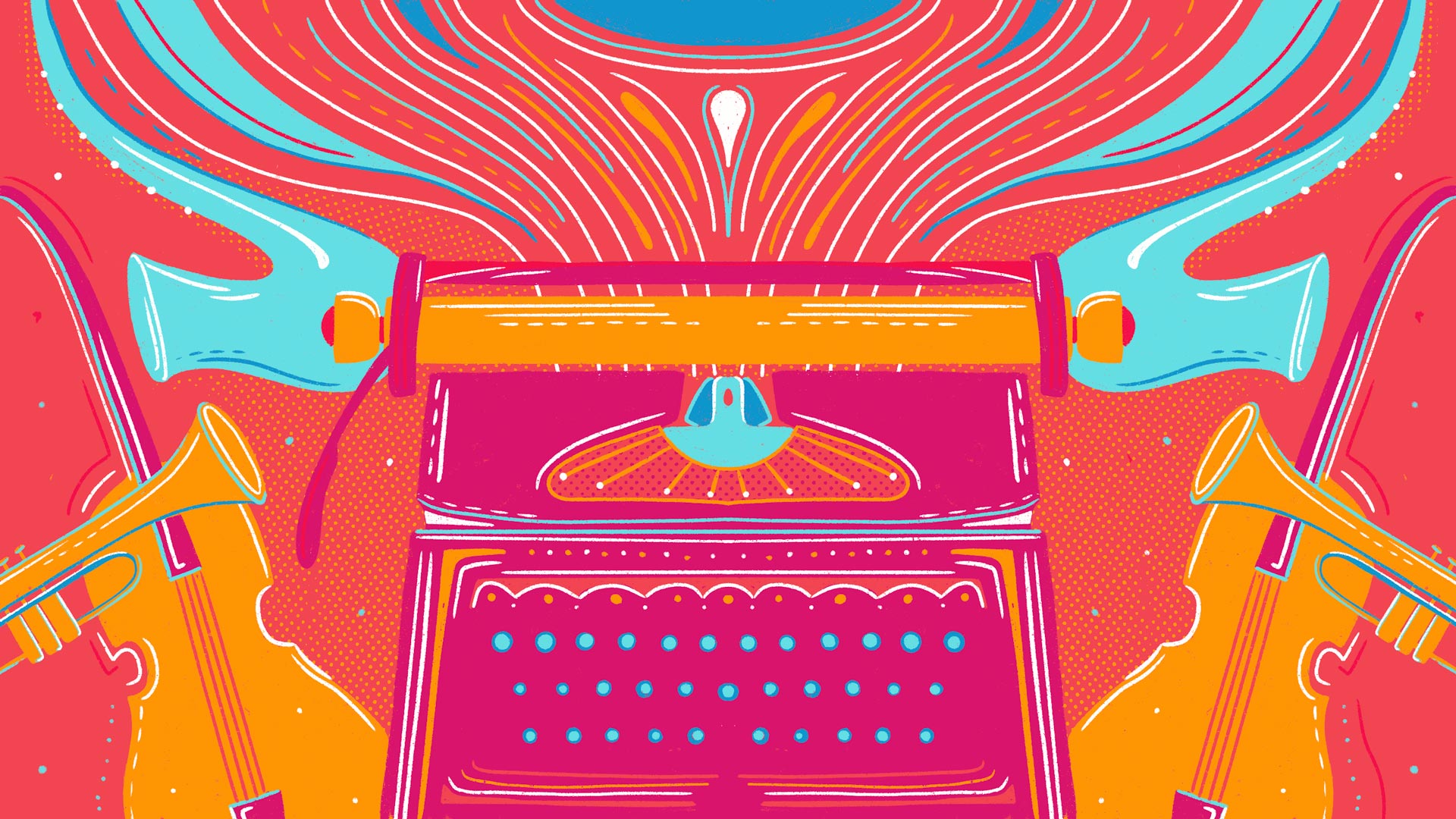
The counterculture of the ‘60s is very complex. It embraces several movements with more or less political leanings, including all the nuances in between. Generalizing, the ‘60s counterculture is based on an anti-war and anti-establishment ideology. Hence, various movements — and the ensuing tensions — were borne out of the escalation of the Vietnam War, the traditional patterns of authority, sexuality and gay rights, women’s rights, nonwhite rights, the end of racial segregation and white supremacy, and experimentation with psychoactive drugs.
Against this background, hippies were a largely cultural movement — supporters of the ideals of the anti-Vietnam political action — that rejected the mainstream culture of the time. Therefore, I will focus on the hippies because they will lead us to relevant historical implications. Going back to Ken Kesey, he was the link between the beatniks and the hippies as the promoter of collective psychoactive drug experiences, which he christened Acid Tests. Indeed, the Acid Tests marked some of the cornerstones of hippie culture: community experience, experimentation with psychedelics, and the sexual revolution.
It was around 1965, and hippie communities were primarily clustered in three neighborhoods located in San Francisco, New York, and Chicago. Just two years later, the Human Be-In, announced in the underground San Francisco Oracle as “a gathering of the tribes,” welcomed some 20,000 hippies to Golden Gate Park — boosting the movement’s popularity and ushering in the Summer of Love. This was an early sign of how alternative media would help the rise — and then the “decline” — of counterculture.
At the same time, the presence of mass media at the event resulted in the first public demonstration of the hippie movement: a triumph of singing, incense, flowers, and flags, accompanied by the sound of drums and the music of the Jefferson Airplane and the Grateful Dead. Timothy Leary, a noted American psychologist and strong supporter of psychedelics, was among the speakers at the event and kicked off the afternoon with his famous phrase “Turn on, tune in, drop out”- a way of urging people to embrace cultural changes by using psychedelics, breaking away from existing societal conventions and hierarchies. Meanwhile, San Francisco was being touted as the Mecca of the counterculture.
A garden of Eden where spiritual, sexual and musical experimentation was at home. America’s hippie pilgrimage began, headed for Haight-Ashbury. In the spring, the movement’s leaders held their first press conference. They announced the Summer of Love — promoted by the song San Francisco (Be Sure to Wear Flowers in Your Hair), which became the counterculture’s unofficial song.
“If you’re going to San Francisco, Be sure to wear some flowers in your hair, If you’re going to San Francisco, You’re gonna meet some gentle people there, For those who come to San Francisco, Summertime will be a love-in there...”
In mid-June, the Monterey International Pop Festival marked — perhaps — the most important milestone for hippie culture, drawing 200,000 people to the Monterey Natural Area and setting the musical tone for the beginning of a new era: that of (psychedelic) counterculture rock. The revolution was making itself heard. And it continued to be heard on the streets of Frisco. But the Summer of Love was not created as a specific event but more as the idea of celebrating life and doing it all in unison: living together. Thus, the Haight-Ashbury district became the hub of what we might describe today as a block party that ran for the rest of the summer — with free concerts at all times of day and night, guerrilla theater demonstrations, public lectures, and “peaceful” demonstrations.
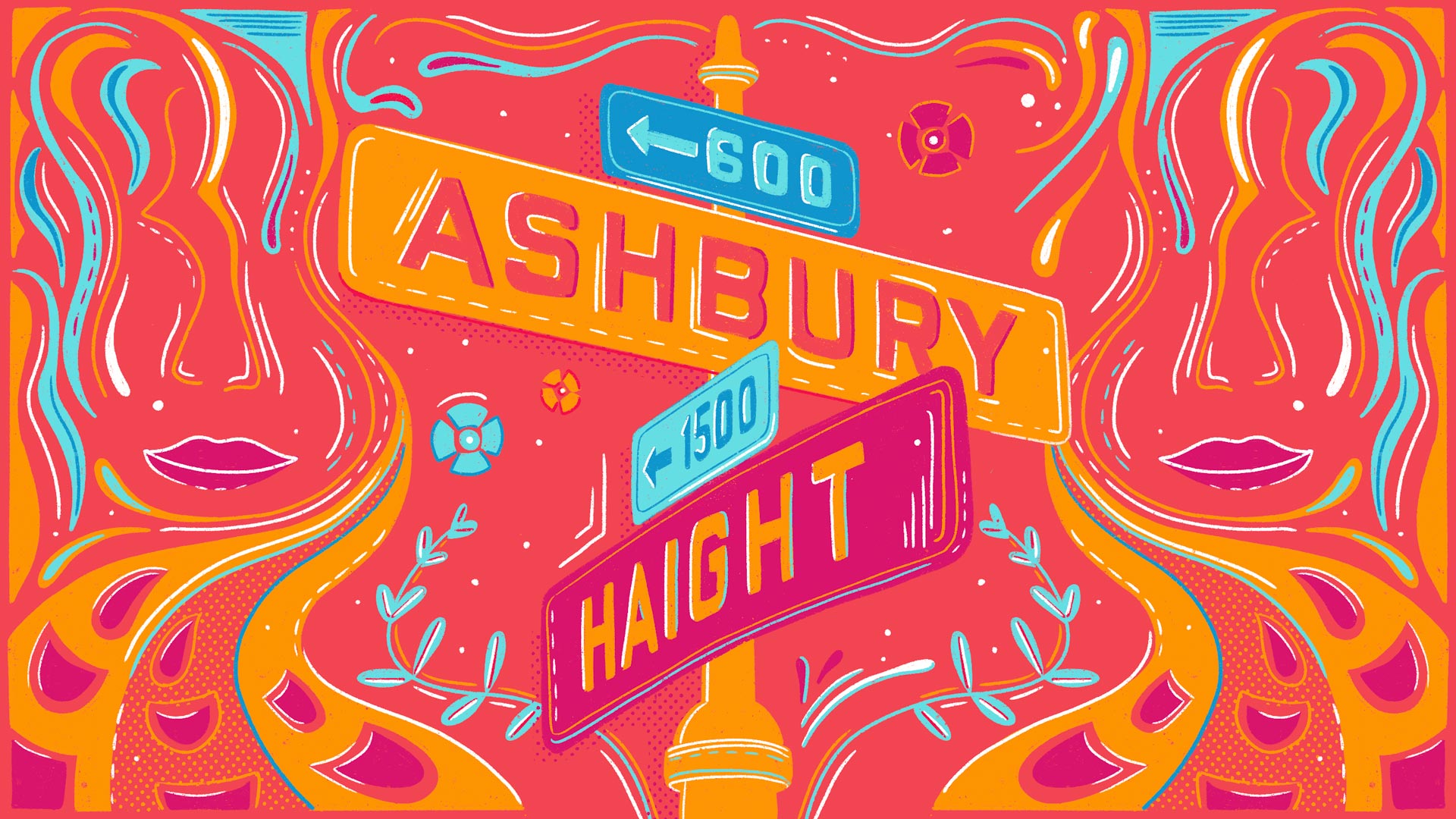
However, the mushrooming of this anarchic throng, combined with the widespread use of psychedelic drugs, led to increasingly frequent clashes with the police, high crime rates, and the looming threat of violent riots. Droves of people began to leave the neighborhood around September, as columnist Jeff Jassen of the Independent magazine Berkeley Barb recounted: “At midnight 4 September tourist season officially ended. And for most of the people concerned, so did the Summer of Love.” He then describes Haight Street on a Tuesday afternoon, asserting how it “would have shocked anyone that had spent any time at all in Haight Street within the last three months.” For the first time since March, he could walk on the sidewalk between Masonic and Stanyan “without being forced to stop for large crowds that knew no more where they were going than why they came in the first place.”
And also, according to Jassen, the rest of the streets also seemed to have emptied from one day to the next. Then, just a few lines later, further into the article, he remarks about how the idea of hippie was probably defined by the mass media more than anything else. “Nowhere was a camera visible.” Indeed, the Haight-Ashbury district had been besieged by photographers, reporters, TV crews, and documentary filmmakers since early summer. All of which inevitably drew attention to the counterculture in the rest of the country. However, the Death of the Hippie Parade is perhaps the event that most clearly underscores the role of mass media concerning the Summer of Love.
The Diggers, a countercultural group that included some of the leaders of the hippie movement, tried to keep the neighborhood livable until they were forced to stage a symbolic funeral for the hippies: “devoted son of mass media.” The ceremony was held on 6 October 1967, exactly one year after LSD was outlawed. That very act unofficially called an end to the Summer of Love.
In a sense, the Diggers and other guerrilla theater groups — anarchist activists, free city theorists, and opponents of capitalism managed to turn the theatrical experience into a huge social experiment. But the very colors, dances, music, and wonders of this “colossal spectacle” betrayed them. This subject is well dealt with in Thomas Frank’s The Conquest of Cool, a book about the time utopia became merchandise. Jordi Costa Vila, a Spanish cultural critique, talks about the transformation of utopia into merchandise “by the mechanisms of assimilation of the hegemonic culture. That is a process in which all the transformative potential is excised from the countercultural inheritance in order to leave it on the surface, as an image, an aesthetic; in short, a simulation.” And in the us-against-them between the subversives and the establishment, in some ways the dominant culture had the power to determine the nature of its own countercultures — oppressing or co-opting them.
According to Thomas Frank, we should therefore consider the ‘60s-‘70s decade not so much as a time of cultural revolution but more of a commercial one. In fact, the mass media, especially TV and radio, exploited the very colors and sounds of the revolution I mentioned earlier to cultivate the idea that being a hippie was cool. And then they profited from it. They took a movement, an ideal, a dream, emptied it of its content, and turned it into a commodity.
Even now, some of the strategies employed by the creatives of the time are still being pursued. In fact, during the ‘60s, precisely to break away from the idea of conformity that had come with the repetitive and self-congratulatory advertising of the ‘50s, new creatives identified with youth. Not so much to reach a younger audience, but because the idea of “youth” epitomized a certain attitude and a break with the past. And it is here that an inconsistency surfaces with the vision that is often attributed to business and capitalism more broadly: symbols of order, staticity, and tradition.
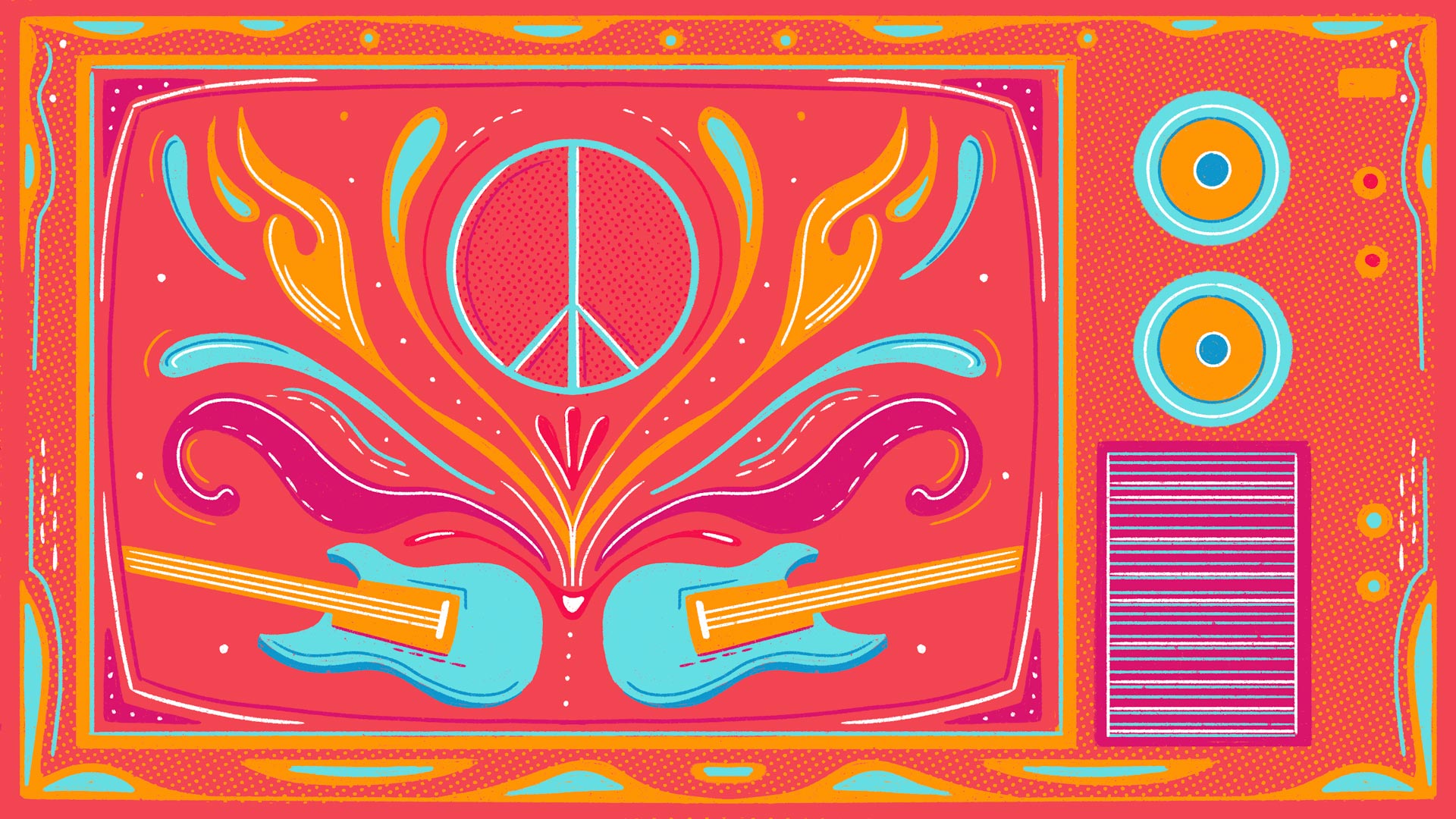
In reality, consumer capitalism is extremely dynamic and elastic. By adapting to the style and language of the counterculture to the point of appropriating it, it demonstrated this. Thus, by the early ‘70s, much of the hippie style had been embedded in mainstream American society. Again, quoting Thomas Frank,
“the counterculture may be more accurately understood as a stage in the development of the values of the American middle class.”
And here a question arises: what remains today of that complex utopia of community, peace, and love?
Probably the paradox of the Californian Ideology.
That of “corporate rebels,” neoliberalism, cyber-revolution, and alternative consumption.
In fact, as contradictory as it sounds, the transformation of ideas that led from the anti-capitalist movement to “hip-consumerism” was partly due to one of the leading figures in the hippie commune movement, Stewart Brand.
After the Summer of Love ended, many hippie groups moved to rural areas where they developed “communal activism” or the “commune movement” — and one of the proponents of this new social order against institutions for the sake of individual empowerment was Stewart Brand. In 1968, he published the first edition of the Whole Earth Catalog: a collection of the best tools, products, and books, along with instructions, images, prices, and suppliers, designed to help the free citizens of the communes develop a “realm of intimate, personal power — power of the individual to conduct his own education, find his own inspiration, shape his own environment.”
But the movement was short-lived, and by 1973, virtually all of the communes had vanished or been dissolved. So, in the late ‘70s and early ‘80s, most of the hippies seeking unconditional independence found themselves in the Bay Area — where the world of technology was developing around them. Broke, and needing a fresh start, many of them ended up working in this new and expanding field, beginning to reimagine computers as tools of countercultural change. Brand himself, in a 1995 Time magazine article titled Welcome to Cyberspace, argued that the personal computer revolution and the Internet had grown directly out of the counterculture: “Forget antiwar protests, Woodstock, even long hair. The real legacy of the sixties generation is the computer revolution.” Its headline claimed: “We Owe It all to the Hippies.”
That same year, English Marxist academics Richard Barbrook and Andy Cameron, in their famous essay The Californian Ideology, wrote about how the Californian Ideology “promiscuously combines the free-wheeling spirit of the hippies and the entrepreneurial zeal of the yuppies.” A fusion of opposites achieved only thanks to the emancipatory potential attributed to the new information technologies — such as in the case of the Apple Macintosh of 1984, which was explicitly marketed as a device that could be used to knock down bureaucracies and attain individual intellectual freedom. A kind of new digital utopia where “everybody will be both hip and rich.” An ideological hybrid that brought together the most radical hippie communities with right-wing neo-liberals. The Western inconsistency.
And since the late ‘90s, this ambiguity has only escalated, as the extreme spread of computer networks has been accompanied by the propagation of small-scale technologies. Thus, those technologies that Stewart Brand preached as “personal” in the Whole Earth Catalog, today truly are such and continue to promise us the ability to undermine bureaucracies and fulfill ourselves, ultimately creating a more fluid and democratic world.
But is this not an illusion?
For that matter, as Chris Garcia, a cousin of the Grateful Dead guitarist and curator of the Computer History Museum in Mountain View, maintains: “There is a tradition [a bond between the creative spirit of San Francisco in the late ‘60s, and that of today] of looking at things philosophically. Even if that philosophy is nothing more than ‘I want to make a lot of money’.”

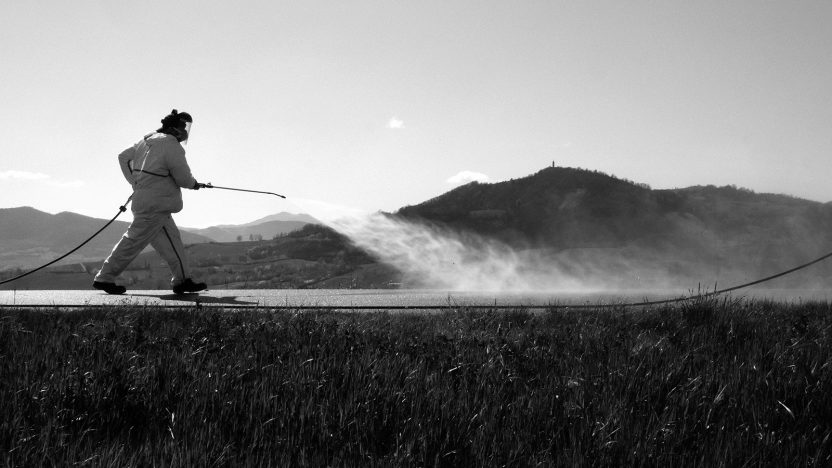
 in Italy
in Italy